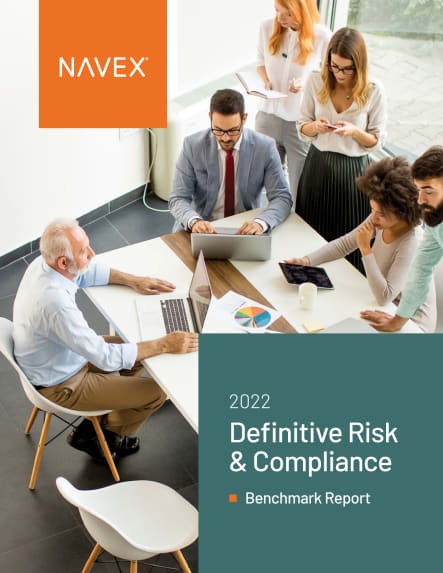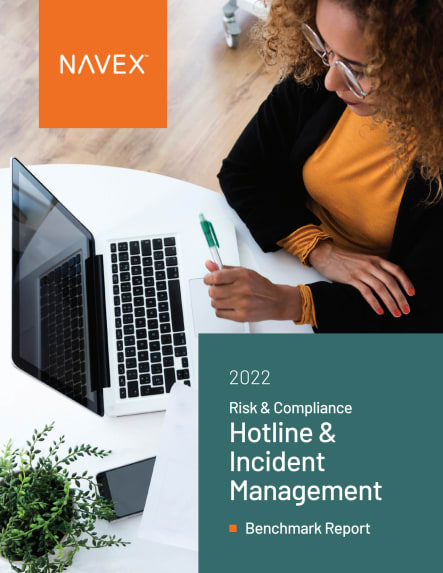To begin, let’s define “benchmarking.” There is often confusion regarding the difference between benchmarking and assessment.
Benchmarking is the process of comparing your organization’s compliance program elements, structure and processes to the external practices of your peers and your industry.
In the compliance world, benchmarking is the process of comparing your organization’s compliance program elements, structure and processes to the external practices of your peers and your industry. Program assessment, rather, is the act of making a judgment about the status or effectiveness of your compliance program, which will typically include an analysis of the benchmarks used in its development. Therefore, the process of benchmarking is a subset of compliance program assessment. It is a way to shape and scope your program so that it operates in a way that meets industry and framework standards for effectiveness.
So, can benchmarking tell you if your compliance program is effective? On its own, not entirely. But, as explained below, it is a vital tool that helps support the overall effectiveness of your program.
What Are the Benefits of Benchmarking?
Benchmarks can be used to justify your budget or other resource requests, to create a prioritized list of improvement opportunities and to inform the timeline for incorporating those improvements.
...benchmarking helps you understand whether your program is within the norms for your size and industry.
Most importantly, benchmarking helps you understand whether your program is within the norms for your size and industry—and where the program as a whole (or individual elements) may land on the continuum from substandard to best. In addition to using benchmarking to measure your program against peers, it is a critical step in designing your program for effectiveness that can withstand the scrutiny of external, governmental or regulatory parties. According to the U.S. Federal Sentencing Guidelines, “An organization’s failure to incorporate and follow applicable industry practice or the standards called for by any applicable governmental regulation weighs against a finding of an effective compliance and ethics program.”
Once you identify how your program compares to applicable benchmarks, you will have the data needed to present concrete program improvement recommendations to your CEO, board and executive team. Senior leadership loves a well-developed continuous improvement plan, and benchmark data helps you clearly set up goals and milestones that will help leadership monitor the success of your program-building efforts.
How to Conduct a Successful Benchmarking Exercise
To get started you’ll need to ask some important questions, such as: Does someone need to pre-authorize the work (e.g., your board, executive management, general counsel, etc.)? Who will be conducting the benchmarking project (E&C, external consultants)? Will the benchmarking be conducted under privilege?
After getting the go-ahead and identifying the appropriate resources (budget, target peers, published surveys or reports, consultants, etc.), you can follow this simple outline for compliance program benchmarking:
- Determine the standards/guidelines on which your program is built. (Are you using the U.S. Sentencing Guidelines framework? Or the model provided by OECD or ISO?)
- Identify your program operating goal or the goal for each program element. (For example, do you want your training and audit elements to be best practices and all other elements more aligned with common, effective practices?)
- Select a program element or process to benchmark
- Identify the key structure, performance and effectiveness metrics
- Choose target organizations of desired size/industry to benchmark
- Collect and analyze data from target entities and published reports/surveys
- Identify opportunities for improvement, based on your operating goal(s)
What to Do with Your Benchmarking Data?
After completing the data collection phase of the benchmarking exercise, you’ll want to ensure all that information goes to good use. First, develop a summary of findings and opportunities based on the data, and align your improvement recommendations with current program operating goal(s) (e.g., common, effective practice versus best practice). You’ll want to share this summary with key stakeholders (CEO, board, etc.) to identify next steps, allocate budget and assign additional resources, as needed, within your organization.
Next, create a concrete roadmap to illustrate how you’ll use the benchmarks moving forward. One of the main outputs for benchmarking is development of a two-to three-year ethics and compliance work plan that will incorporate program improvements —and remedy program gaps or inefficiencies. Include clear documentation of the benchmarks used to shape your program so they can be referenced in program/risk assessments. The work plan should also include projected dates to periodically repeat the benchmarking exercise in order to course correct your program.
Lastly, communicate your benchmark results and work plan with all departments involved in routine program/risk assessments to ensure goals are being met or adjusted based on new information.








